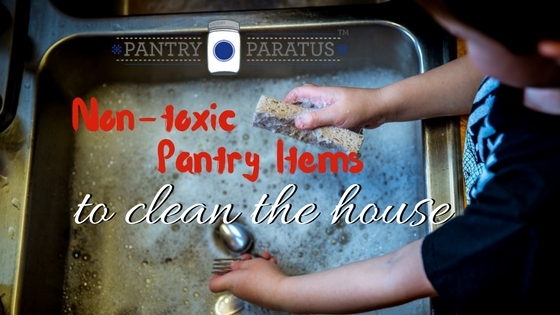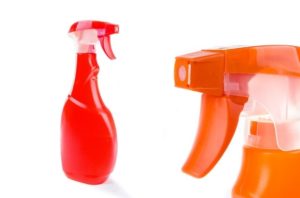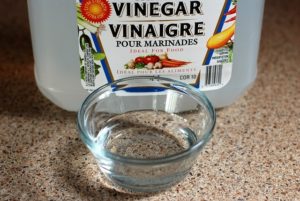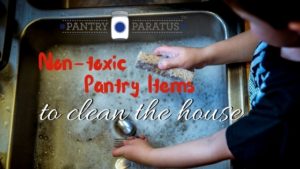
Our everyday products which we use for cleaning, polishing, washing and disinfecting are necessities that we cannot live without. Advertisements have been telling us that our houses are full of deadly germs and virus that may attack us and make us sick.
We believe that we are always surrounded by diseases that may just inflict on us anytime, and to make ourselves safe, we obsessively try to keep our surroundings sanitized by using endless toxic products that smell sweet but are full of harmful chemicals like phthalates, perchloroethylene, triclosan and many others.
 These chemicals come with many health risks ranging from endocrine disruptions, sperm reductions, and cancer creations to migraine and asthma triggers and skin related complications. Online resources can be found with detailed outlines describing each toxic ingredient and in which products are they found along with a clear overview of their health risks.
These chemicals come with many health risks ranging from endocrine disruptions, sperm reductions, and cancer creations to migraine and asthma triggers and skin related complications. Online resources can be found with detailed outlines describing each toxic ingredient and in which products are they found along with a clear overview of their health risks.
As the awareness of the dangers of these products increase, people move towards more natural cleaning methods. These methods employ the most basic pantry products which are not just harmless but sometimes even beneficial so they keep the house spic and span while contributing to a better health. These non-toxic pantry items are easily found and are a lot more affordable too.
These non-toxic pantry items can be easily made into cleaning products through simple combinations.
- Baking Soda: Cleaning, deodorizing, scouring and softening water
- Borax: Cleaning, deodorizing, and disinfecting.
- Castille soap or vegetable soap: Cleaning
- Distilled white vinegar: cuts grease and scum, washes mineral deposits away, stops mold formations, freshens, kills up bacteria and viruses.
- Essential oils: disinfecting, freshening and fragrance.
- Kosher salt: Scouring and disinfecting.
- Lemon and citrus foods: strong food acids that disinfect and freshen
- Corn Starch: cleaning, polishing, and washing carpets and rugs.
- Ethanol: disinfecting.
 These basic ingredients can be used in different combinations to clean many different areas of the house, from floors to textiles and everything in between.
These basic ingredients can be used in different combinations to clean many different areas of the house, from floors to textiles and everything in between.
For cleaning tubs, sinks and tile: Mix 2/3 cup baking soda with ½ cup vegetable oil, add 2tsp of vinegar and ½ cup water. Shake well and use with cloth or sponge.
Clean glass by mixing 1/4 cup vinegar and 4 cups warm water in a spray bottle. Use in cleaning glass or mirrors with a dry newspaper or cloth.
For cleaning and sanitizing floors, mix 1/2 cup borax with 2 gallons of hot water in a bucket and spread with a mop or sponge. Rinsing is not needed.
To clean cooking pots, toilet bowls or anything that needs scouring, mix a cup of baking soda with a cup of borax and a cup of kosher salt. Sprinkle on the surface that needs scouring and wipe with a sponge. Rinse when done.
Remove molds by mixing ½ a cup of borax and ½ a cup of vinegar to make a paste and then scrub with a brush. For stubborn molds, let the paste sit for an hour before scrubbing and rinsing away.
Drains can be cleaned by pouring ½ cup baking soda into the drain followed by 1 cup of vinegar. After 15 minutes of fizzing, the drain can be rinsed with hot water or the process can be repeated. It’s also safe to leave the drain overnight if it’s too greasy.
To polish varnished wood, mix a few drops of lemon essential oil in ½ a cup of warm water. Spray onto a soft cloth without wetting the entire fabric and wipe the furniture with the cloth. Finish it off by wiping once again with a dry cloth. For unvarnished wood, mix equal amounts of olive oil and lemon juice and apply a small amount on a piece of cloth. Then wipe in long strokes all over the surface of the wood.
For laundry, combine 1 cup castile soap, 1/2 cup washing soda and 1/2 cup borax. For light loads, use 1tsp and 2 tbsp for heavy loads.
For stains on fabrics, mix equal parts of vinegar and water and spray directly on the stain. Let the mixture stay for a few minutes and then clean with sponge or brush with hot soapy water. Fresh grease spots can be managed by sprinkling corn starch on them and waiting for 30 minutes before dusting off.
Use a few drops essential oils in any of the above methods, except for drain cleaning, to leave the area not only clean but smelling good as well.
Whether it’s a regular session of cleaning the house or a full blown spring cleaning week, making sure that the products we use around the house are not just effective in cleaning but also harmless is very important. Both, the young and old, who live in the house and breathe the air in it deserve a safe nontoxic environment that doesn’t contribute to illnesses or developmental problems. These natural items combine all the upsides that a good household cleaning product should have while leaving the side effects behind.
James Smith is an avid prepper and a homesteader, and you may remember his Pantry Paratus article, “Using Leaves in the Wild” (a favorite!). He loves to write about prepping and natural living. Follow @JamesSmith1609 for more updates.

